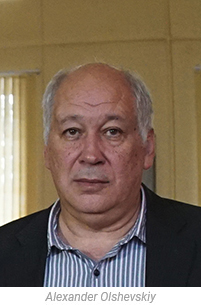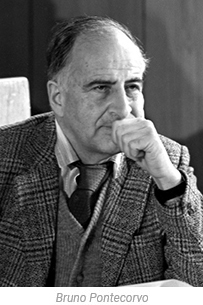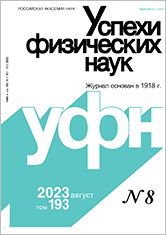Neutrino oscillations: status and prospects for determination of neutrino mass ordering and leptonic CP-violation phase
Publications, 08 August 2023
The Joint Institute for Nuclear Research is preparing to celebrate the 110th anniversary of the birth of the founder of experimental neutrino physics, one of the JINR founders Bruno Pontecorvo (1913 – 1993). An outstanding scientist was the first in the world to put forward the idea of neutrino oscillations, which was confirmed experimentally only 60 years later. On the eve of this date, a team of authors from the Joint Institute has prepared a review article on this topic. The work gives an idea of the current state and prospects for further measurements of the parameters of neutrino oscillations. The review was published in the Physics-Uspekhi journal
on 8 August 2023. Head of the Scientific and Experimental Department of Elementary Particle Physics of the Laboratory of Nuclear Problems at JINR Alexander Olshevskiy spoke about a revolutionary idea of neutrino oscillations.
 “It is well known that Bruno Pontecorvo made several discoveries during his life and put forward a number of revolutionary ideas that significantly influenced the development of modern elementary particle physics. However, admittedly, the idea of neutrino oscillations proposed by him in 1957 is the most striking and surprising one. This model was developed further after the introduction of neutrino flavour mixing by the authors Maki, Nakagawa, Sakata in 1962. Afterwards, Pontecorvo and Gribov formulated it in a close to modern form in their work in 1968.
“It is well known that Bruno Pontecorvo made several discoveries during his life and put forward a number of revolutionary ideas that significantly influenced the development of modern elementary particle physics. However, admittedly, the idea of neutrino oscillations proposed by him in 1957 is the most striking and surprising one. This model was developed further after the introduction of neutrino flavour mixing by the authors Maki, Nakagawa, Sakata in 1962. Afterwards, Pontecorvo and Gribov formulated it in a close to modern form in their work in 1968.
Since then, many authors have contributed to the study of possible oscillation scenarios, but Pontecorvo, Bilenky, and Petkov have done it most systematically, which is reflected in several of the most cited reviews. I would like to emphasise the important role played by Samoil Bilenky. His role both in developing the theoretical context and variants of oscillations, and in the infinite conviction that this phenomenon exists, and subsequently in explaining the details and priorities in the history of this scientific idea.
There is a fundamentally revolutionary fact in the idea of oscillations. For the existence of this phenomenon, neutrinos should have non-zero masses, unlike the generally accepted at that time formulation of the theory with massless neutrinos.
The first experimental hints of neutrino oscillations appeared in experiments with solar neutrinos, where it was found that the neutrino flux from the Sun is much lower than expected. To detect neutrinos in the Homestake experiment, the Cl-Ar reaction proposed by Pontecorvo was used. It had a neutrino energy threshold of about 0.8 MeV and, therefore, registered only a very small part of the neutrino flux from the Sun.
 This caused some doubts. A generally accepted solar model may not be so accurate as to predict flows in the smallest detail, and the observed contradiction may be due to the uncertainty of the theory. Later, a similar effect was observed in the GALLEX and SAGE experiments, where another isotopic transformation, Ga-Ge, with a threshold of about 0.2 MeV was used. It allowed detecting a significant part of the main solar pp reaction and, it would seem, to get rid of doubts about the uncertainty of the theory’s predictions. However, this prejudice remained, and neutrino oscillations were not considered as the preferred reason of the deficit.
This caused some doubts. A generally accepted solar model may not be so accurate as to predict flows in the smallest detail, and the observed contradiction may be due to the uncertainty of the theory. Later, a similar effect was observed in the GALLEX and SAGE experiments, where another isotopic transformation, Ga-Ge, with a threshold of about 0.2 MeV was used. It allowed detecting a significant part of the main solar pp reaction and, it would seem, to get rid of doubts about the uncertainty of the theory’s predictions. However, this prejudice remained, and neutrino oscillations were not considered as the preferred reason of the deficit.
The situation changed with the appearance of the results of the Super-Kamiokande (SK) and SNO experiments, which displayed phenomena that fully confirm neutrino oscillations in atmospheric and solar neutrinos accordingly. The importance and uniqueness of neutrino oscillations were reflected in the 2015 Nobel Prize in Physics awarded to Kajita (SK) and McDonald (SNO) “for the discovery of neutrino oscillations, which shows that neutrinos have mass.”
Now, about 25 years after the publication of the SK and SNO results, neutrino oscillations have been confirmed and studied in many experiments with various detector methods and neutrino sources. One of the reviews prepared by JINR authors (Kolupaeva, Gonchar, Olshevskiy, Samoylov), describing the current state and prospects for further measurements of neutrino oscillation parameters, appeared recently in the Physics-Uspekhi journal for the 110th anniversary of Bruno Pontecorvo”.
